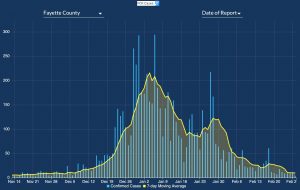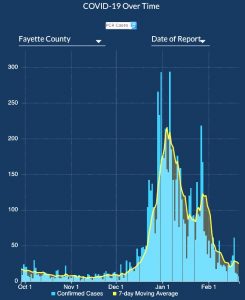Illnesses, deaths and related topics resulting from the COVID-19 pandemic are the predominant news stories in America and the world today. It is perhaps appropriate to look at the statistics from recent seasonal flu years and the swine flu from 2009-2010, to see what that data showed.
Though a wealth of sometimes conflicting theories and projections about the final number of infections and fatalities in the U.S. and worldwide from COVID-19 are making the news, the final result of the novel SARS-CoV-2 virus, and the resulting COVID-19 disease, remains to be known.
As of April 5, there were 336,673 cases of COVID-19 in the U.S., and 1.27 million cases worldwide, with 9,616 deaths in the U.S. and 69,425 deaths around the world.
The status report for April 6 from the Ga. Department of Public Health noted 7,314 cases and 229 deaths, for a current fatality rate of 3.13 percent.
It is noteworthy that hard-hit countries like Italy and Spain over the past few days are seeing a decline in the number of new cases and the number of new deaths.
While the final fatality rate for COVID-19 nationally and worldwide remains to be seen, it is noteworthy that the death rate for this disease is much higher than the rates shown during times of seasonal flu.
During seasonal flu epidemics, approximately 80 percent of deaths are estimated to occur in people 65 years and older.
Put in perspective compared to the current numbers for COVID-19, CDC data for the current flu season and those from the two prior seasons show:

Additionally, during the 2009-2010 swine flu pandemic, known as A/(H1N1) pdm09, there were between 151,700-750,400 deaths worldwide, with 80 percent of deaths in people under age 65, according to CDC.
Also during the swine flu pandemic, CDC reported 60.8 million cases in the U.S., with 274,304 hospitalizations and 12,469 deaths.
https://www.cdc.gov/flu/pandemic-resources/2009-h1n1-pandemic.html
Swine flu was a quadruple reassortant virus, consisting of two swine-origin viruses, one avian-origin virus and one human-origin virus. The virus first appeared in Veracruz, Mexico and went on as the pandemic spread to primarily infect children, young adults and people with lung and heart diseases, according to the Journal of Preventative Medicine and Hygiene. https://www.ncbi.nlm.nih.gov/pmc/articles/PMC4910438/













Leave a Comment
You must be logged in to post a comment.